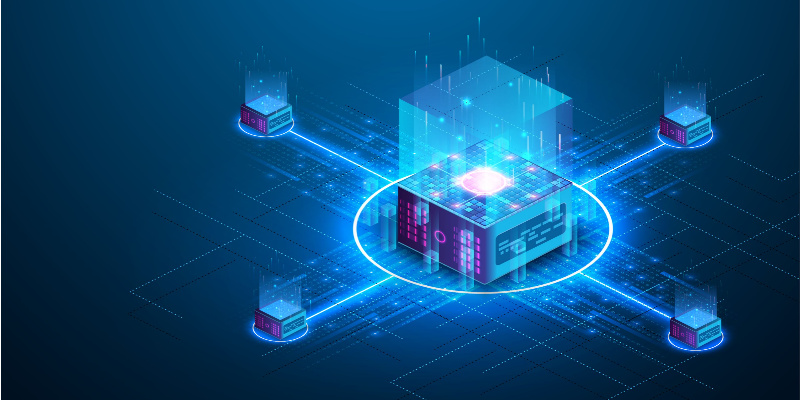A VM (virtual machine) is a virtual system working like a computer system inside a computer. It operates on the isolated partition of the host computer with memory, CPU power, and operating system (macOS, Windows, and Linux), and also other resources. it enables the end-users to run and use applications on virtual windows machines as they typically would on the workstation.
How does a Virtual Windows Machine work?
Virtual Windows Machines are made by using virtualization technology. This technology makes use of the software for the simulation of virtual hardware allowing several VMs to operate on one machine. The physical machine is called a Host, and the virtual machines operating on it are called guests.
A software named a hypervisor manages this process. This software is responsible to manage and provision the resources, such as storage and memory from the hosts to guests. It also manages the operations in virtual windows machines, so that while using resources they don’t overrun each other. The virtual Windows machines only operate when there is a hypervisor for the distribution and virtualization of the host resources.
Also read: 5 Best Minecraft Server Hosting Options
Why Businesses Use VMs?
Scalability
It is quite easy and simple to add a virtual machine, like cloning copies of the virtual machine in the physical machine. The organizations can better respond to load fluctuations that is helpful to stabilize the performance. It is much efficient and fast in comparison to installing different OSs on a physical server.
Cost and Resources Efficiency
The organization makes use of virtualization to host several VMs on a single server. Suppose, an organization desires to deploy multiple applications. Rather than investing in the additional servers, the virtual windows machine can be deployed on one server for all applications, the same result at the cost fraction. It enhances cost efficiency as the physical hardware is used to its extreme capacity.
Security
The host operating system isolated the VM environments that enhance the security because vulnerabilities such as malware don’t affect the underlying hardware. This makes it ideal for VMs to check for changes in new applications or software as they enter production.
It is quite easy to convert a compromised VM to the old version. You can rebuild or delete it to speed up disaster recovery.
Cloud computing
The virtualization goes collaboratively with cloud computing. The organizations may deploy cloud-native virtual machines and transfer them to on premiss servers, and back to be benefitted from hybrid clouds.
To meet a different level of usage, the cloud services can be tweaked in real-time. It will improve the scalability for not only the users but also internally. For example, to test the implementations, the developers can create an ad hoc virtual environment on the cloud.
In organizations, virtual desktop infrastructures are also enabled by virtualization. The users can be allowed to access the desktop environments such as Linux or Windows remotely by the VDI deployments. Consider it like a digital office that can be accessed anywhere, anytime.
Also read: Why Choose Cheap Windows VPS?
Virtual Machine’s Advantages
Even though some innovative applications and containers have impacted the use of Virtual Machines, the VMs continue to be widely deployed by organizations of all sizes as they offer a number of important benefits, consisting of;
- Virtualization reduces the costs by minimizing the requirements of the physical hardware system. The virtual machines make use of the hardware resources much efficiently as compared to bare metal deployments. It minimizes the number of servers that need to be deployed and the associated costs for the maintenance. Moreover, it also decreases the cooling and power demand.
- The virtual windows machine is isolated, self-contained environments, which can operate several types of apps and OSes on the same server. It eliminates the potential conflicts and also security problems, in addition to the need to deploy several physical servers.
- It is quite easy and simple to move the VMs, copy, and reassign between the host servers, in addition to between cloud environment and on-premises, which makes better the use of the hardware resources, while making it easy to scale apps.
- To manage the VMs is easy in a number of ways. testers, administrators, and developers can deploy virtual machines quickly and several VMs can be managed easily through a centralized interface. The admins can also be benefitted from virtual environments to facilitate the backups, new deployments, disaster recovery, and basic tasks of the system administration.
- As the virtual machines run in isolated environments, they can offer protection of additional levels to counter malicious attacks. Moreover, they also support features like backups and snapshots making it easier to roll back the virtual windows machine in the event the existing one becomes corrupted or compromised.
The virtual machines do not need hypervisor-specific or special hardware. Though, if the physical hardware is to host more than one running VMs, the host computer requires more storage, processing capacity, and bandwidth in comparison to a traditional server or desktop. As the Virtual Machines on a physical host can use an unequal number of resources, one can hog as available physical storage, and the other stores a bit. The IT professionals have to balance the virtual machines with the resources that are available. Luckily, virtualization platforms make the process easier.
Downsides of the Virtual Windows Machine
as the VMs have a lot of advantages for the users, but there are also several disadvantages of the virtual machines. You may face inconsistency in the performance particularly if the needs of infrastructure for a specific application are not fulfilled by running several VMs on a physical host. Most of the IT operations use a balance between virtual and physical systems.
Virtual Windows Machine Management
You have to use Virtual Machines with a lot of significant arrangements, a few of them can be addressed by the best practices of the administration of the general system and tools developed to manage the VMs.


